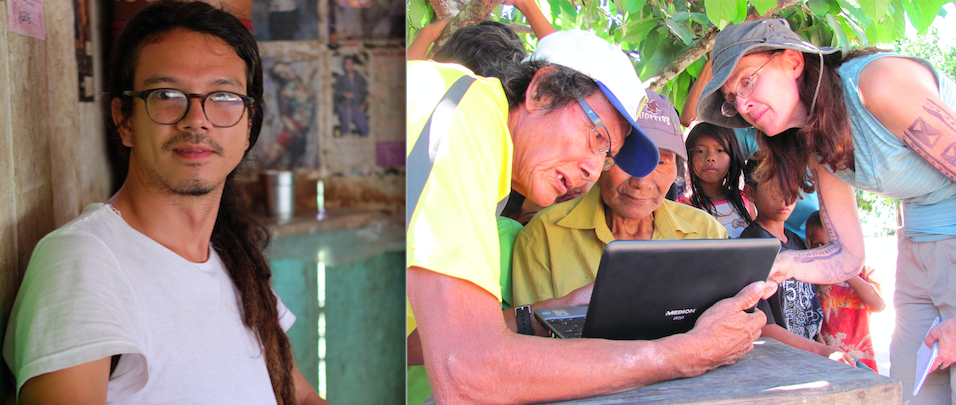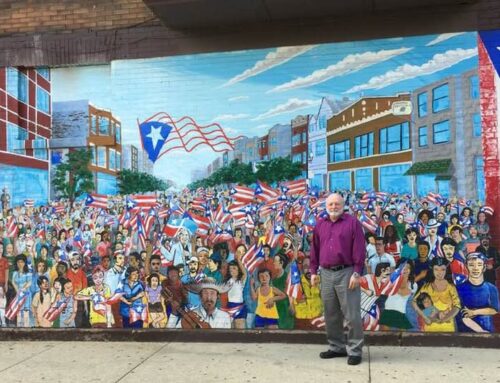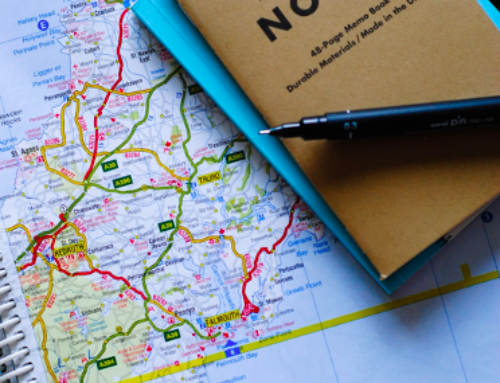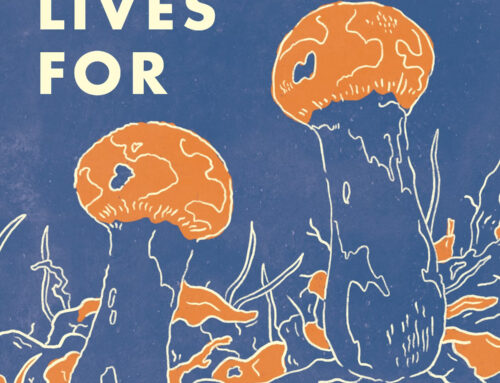AES is pleased to share this interview celebrating our 25th Anniversary American Ethnologist article from 1997. Vinicius de Aguiar Furuie, assistant professor of anthropology at the University of Toronto, interviews Beth Conklin, associate professor of anthropology at Vanderbilt University, about her article “Body Paint, Feathers, and VCRs: Aesthetics and Authenticity in Amazonian Activism.”
This interview considers questions of self-representation in the evolution of Indigenous social movements in Brazil. It reflects upon the surge in Indigenous activism and media production in Brazil during COVID-19 and the crucial role played by these interventions in mitigating the effects of the pandemic. It also takes up the recent rise of Indigenous women in leadership roles, the turn towards images of care and fertility in the movement’s self-representation, and the ongoing attacks to Indigenous rights in Brazil taking place in a political atmosphere of enduring debates over the “authenticity” of Indigenous people.

Vinicius de Aguiar Furuie (left) and Beth Conklin (right) with Wari’ in rural Rondônia, viewing historical photos of their fathers from the first contact in 1956. Photo credit: Claudia Augustat.
Vinicius de Aguiar Furuie (Vini): How was your experience publishing this article at American Ethnologist 25 years ago? Where did your motivation to write about the question of authenticity in the struggle for Indigenous rights come from?
Beth Conklin (Beth): I’m honored to be reflecting back on this article published in AE in 1997 because the journal has been really important to me. Michael Hertzfeld was the AE editor on the first major article I published after graduate school, in 1995. I remember him saying, “we want the theory to emerge from the ethnography.” That was a transformative idea for me. As you know, when you’re first starting out, you feel like theory is everything and that’s where you need to start. The fact that a scholar of Michael’s intelligence and influence would prioritize ethnography made me realize that our strength is in working from the ground up. We have this immense privilege to be able to take the time to get to know people deeply and learn as much as we can about how they experience the world. What Michael pointed out was that a locally grounded ethnographic perspective can generate interesting and sometimes innovative perspectives.
In the early 1990s, when I wrote this article, I was working with a people named Wari’ in western Brazil, and I tended to see things in terms of their self-positioning. This was a moment when Brazil was exploding with new kinds of Indigenous activism. It was happening all over the world but especially in Brazil, where Indigenous people were able to halt the construction of a major dam on the Xingu river. This was the time of Rio 92 [the UN environment conference held in 1992 in Rio de Janeiro], as well as the growth of Indigenous filmmaking, with projects such as Video nas Aldeias [Video in the Village]. There was so much going on; it was tremendously exciting. And in some ways, it was also in tension with what was going on among the Wari’. In the early 1990s, they began to interact with other Indigenous people in ways that they hadn’t before, in conferences and new organizations. And one of the things I kept hearing was how often they felt disrespected or marginalized in these encounters. Often, the criticism they received from other Indigenous people was about how they were dressed or not dressed; not wearing feathers, not wearing headdresses, not using body paint. But, as I explain in the article, they had learned not to dress that way in order to fly under the radar and hopefully be treated as full human beings by the Brazilians they had to interact with. Their complaints about the devaluing of their visual appearances resonated with my own experiences in the 1980s, when I had first gone to Brazil. I heard from a number of anthropologists that the Wari’ were boring (chatos), because they had given up distinctive visual markers of their Indigenous identity and culture, they didn’t do public rituals, and so on. But having lived with them for two and a half years by that point, I knew that there was so much cultural integrity within the communities: everyone still spoke the Indigenous language, almost everyone married within the group. They were making their living by hunting and gathering and fishing. And at that moment, there was a revitalization of shamanism and music and festivals—which didn’t last much longer, but I had seen it happen. So I knew that there was a lot of “authentic indigeneity” in this community, but outsiders tended to superficially dismiss them because of how they looked. That is how I started thinking from their perspective about hierarchies of value among different kinds of Indigenous people and the prominence of visual symbols in shaping those evaluations. Going back to what Michael Hertzfeld said, I felt that this was a chance to write something in which theory came from this ethnographic grounding of a people’s experience in a particular time and place.
Vini: The COVID-19 pandemic caused a surge in Indigenous activism and media production in Brazil. How does this moment help us understand what has changed—and what has not—in how the Indigenous social movement uses media to demand their rights? How did Indigenous actors intervene in the politics of a sanitary crisis that wreaked havoc through much of Amazonia?
Beth: The pandemic did wreak havoc and many Indigenous people and elders lost their lives. But many communities rallied in unprecedented ways. And at a moment when basically the whole world went online, Indigenous people skilled in social media and online organizing found unprecedented spaces that opened up because the pandemic served as a disrupter. Looking back, we can see a lot of representational and communicative work that reconfigured the public face of indigeneity in Brazil. There were a lot of dimensions to this. One was that it was a moment when Indigenous activists, community leaders, and Indigenous health professionals demonstrated a degree of competence and organizational efficacy that had never been mobilized on such a scale and with such visibility. COVID-19 was interesting because everybody was facing the same virus and the same challenges, with access to the same information. Indigenous people and their allies in Brazil mobilized very quickly in order to get information to rural and urban communities, organize various forms of isolation and quarantine, distribute masks, and deal with issues of medical care and food security. It stood in striking contrast to the disorganization that happened in other sectors of society. Some of that competence was technical: APIB [Associação dos Povos Indígenas do Brasil, a major pan-Indigenous organization in Brazil], already in March of 2020, prioritized the collection of data and statistics as well as individual personal narratives and human interest stories about the pandemic’s effects on Indigenous groups. They updated the data that they collected from all over the country in real time. Not the government, not FUNAI (the Brazilian Indian Affairs agency); APIB became the go-to source for journalists and others trying to look at the impact of the pandemic on Indigenous communities. They published many bulletins, starting from April 2020, on various aspects of the pandemic, everything from the number of deaths to the land invasions that accelerated during the lockdowns. If you think back to the state of disorganization that so many of us were in, it’s truly impressive. They were publishing in Portuguese, English and Spanish, marshalling data and documenting epidemiological patterns. In other organizations and local communities, you had young people and older people coming together. Women in particular organized around initiatives like medicinal plant knowledge, producing remedies to treat people who were infected, to keep them hydrated and shore up their immune systems.
The other major campaign during the pandemic was the use of social media to communicate about what was going on among Indigenous people and shape both public attitudes and public support. You had young, tech-savvy Indigenous people, many of whom were university students who were locked down or had gone back to their communities, producing messages about the Indigenous situation. They used the disease as a metaphor to connect the pandemic to critiques of the interlinked harms of capitalism and colonialism, political corruption, land invasions, and climate change. They connected COVID-19’s effect on breath and George Floyd’s dying words to the idea of the Amazon as “the lungs of the world.” There were absolutely brilliant social media campaigns with very sophisticated messaging and deployment of a visual imagery and symbolism.
Vini: Your article offers us a complex reflection on the issue of authenticity when it comes to the representation of Indigenous peoples. The Bolsonaro government that was recently voted out of office infamously proposed to amend the Brazilian constitution, restricting the demarcation of Indigenous land to those occupied by Indigenous people in 1988. This highlighted the political centrality of the notion of authenticity in the struggle over land rights. Have the terms through which authenticity is defined and measured changed in the current political and mediatic scenario?
Beth: The marco temporal that you just described would have invalidated vast numbers of Indigenous territories that hadn’t yet been legally recognized in 1988. Parallel to that was other legislation that proposed to define Indigenous identity according to cultural markers of traditionalism, such as speaking a traditional language and practicing traditional rituals. It’s so tedious to still have to be talking about these issues of authenticity in 2023. Like, can’t we get past this? I think anthropologists and Indigenous activists are largely past the authenticity stuff, but the enemies of Indigenous rights, especially in Brazil, return to it over and over. There’s a long history of various types of rules and laws trying to define what counts as authentic Indigeneity. This was tremendously threatening in that some of the major and most transformative changes that have happened in the 25 years since that original article was published have to do with the ways that Indigenous people have moved into urban, cosmopolitan spaces. Very few Indigenous people in Brazil had attended universities by the mid 1990s. And that really changed in the 2000s. So now you have a whole generation of highly-educated, Indigenous people who have perspectives and skills that are extremely important to their future, but this retrograde legislation would have dismissed their claims of being Indigenous.
The “authenticity criteria” issue would be just annoying on an individual and personal level, but Brazilian politicians and hostile media elevate these questions to a level that is weaponized against Indigenous interests. So reflecting back on this 1997 article, one striking thing is that activists and Indigenous political leaders have really doubled down on visual markers of distinctive Indigenous identity. There are so many more headdresses, body paint, feathers and grass skirts and so on now. If you go to a protest, it’s incredibly colorful, and the symbols are foregrounded much more than they were even in 1990s activism. But the difference is that the production of these performances and the meanings behind them are so much more in the hands of Indigenous activists than they were back in the 1990s.
Vini: Laura Graham (2016) writes about “representational sovereignty” to describe how Indigenous people have come to exert more control over their representation to outsiders. Could you talk more about how that process came about and what it has meant in the past decades?
Beth: Laura Graham uses the term “representational sovereignty” to describe a shift in the means of production of messages and images. Representation is now much more in the hands of Indigenous people, rather than being under the control of outsiders upon whose media they were dependent in earlier generations. In the 25 years since that article was published, technology has, as I argue, altered the possibilities of Indigenous self-representation. It began in the 70s and 80s with cassette tape recorders, which allowed Indigenous people to a make their own recordings and share them with other Indigenous communities and be able, also, to hold politicians accountable. Then in the 90s, Indigenous filmmaking was the arena where there was a huge expansion of control over the production of representations. This has expanded in all kinds of interesting and exciting ways. Important were the encounters with sympathetic non-Indigenous people, potential allies, NGOs, audiences on speaking tours, all of whom served as reflective mirrors that amplified certain positive images of indigeneity and the value of distinctive elements of Indigenous culture in ways that Terry Turner (1991), for example, wrote about very powerfully back in that time. Since the early 2000s, when Brazilian universities began reserving spaces explicitly for Indigenous students, so many more people have gone on to not just finish high school but also to enter universities, to get postgraduate degrees, and so on. That has amplified the ability to speak directly and articulately. It also has integrated ideas about indigeneity with global discourses of racial and social justice: one of the big changes you see now is Indigenous people framing their causes in terms of racism, patriarchy, and climate change, in ways that are very legible to social justice activists and audiences all over the world.
Vini: One theme you pick up in the original article is how the aesthetics of Indigenous activism was skewered towards masculine representations, largely due to the fact that there were few female Indigenous leaders in the 90s. Has that changed? What are the new gendered forms of political media activism?
Beth: This is one of the biggest changes since the 1990s: the rise of women in Indigenous activism. Women are at the center of so much in Brazil today. It’s thrilling to be doing this interview on February 10, 2023, because exactly a week ago, Joênia Wapichana took over as head of FUNAI, the Brazilian Indian Affairs agency. And now there’s a new ministry of Indigenous Affairs headed by Sônia Guajajara. Joênia is an attorney, she was the first female Indigenous attorney in Brazil and the first Indigenous attorney to take a case to the Brazilian Supreme Court. In terms of visual and symbolic politics, if you look back over the last few years, one striking and really delightful development was the rise of the Indigenous Women’s Marches in Brasilia, which began in 2019. Organizing as women has been tremendously empowering; you see all kinds of intergenerational solidarity and international solidarity drawing women from Ecuador, Peru, and so on. The imagery of these recent protests has been so different from those of the 1990s. So much of it back then was a masculinist imagery of fighting, warfare and combat; the warrior in body paint with spears, and that kind of confrontational stance. That was important and appropriate for that moment, and it’s certainly still relevant in some contexts. But in a general context of presenting Indigenous causes to the nation and to the world, the connection between Indigenous women and environmental issues, ideas about fertility and generativity, have really come to the center.

Photo credit: ©Benjamin Mast/ISA
During Covid, after vaccines became available, there was a social media vaccination campaign that played directly on widespread Indigenous values about the importance of family and intergenerational support. The message was aimed at young people, who were the ones on social media, and it urged them go get elders vaccinated and to help them access the vaccine. In contrast to messaging about protecting your individual body, it was a family-oriented message. To some extent, the two ideas of warfare and care have always been there. In the 80s and 90s, the idea of Indigenous people as guardians of the earth or stewards of the rainforests was very much about care. What you’ve seen more recently, when Indigenous people are taking control of the message, is that they linked it to women’s roles and care for families and children and elders.
Vini: The article also analyzes the limits of politics enacted through media representation—limits such as the exclusion of non-media savvy people like the Wari’. Just recently, Raoni Metuktire, the world-famous Kayapó leader, was one of the representatives that invested the newly-elected president Lula with the presidential emblem, in an event that was televised to millions of people and was filled with symbolic promises. But the recent news of how gold miners have destroyed entire Yanomami villages show how much Indigenous rights are routinely violated in Brazil. Given the changes in technology, political circumstances, and social dynamics, what tensions, contradictions, and liabilities seem to be coming into focus now and in the future?
Beth: I think there are internal tensions that in some ways are parallel to the marginalization of “unsexy” people like the Wari’, who initially motivated me to write about this issue. But the biggest tensions and liabilities are external. They’re about the hostility and the power of the economic and political forces that are arrayed against Indigenous interests and the struggles that are going on over land rights, dams, and development projects that are already underway. There is a lot of positive symbolism being marshaled by the new Lula government, as you pointed out. But how much of that will translate into real action that makes a difference on the ground is an open question. Symbolic politics is always important. It has to be part of the equation; without it Indigenous causes just fall off the radar. But in itself, it’s never sufficient. There are other political and economic forces that have to be mobilized as well. Visual imagery is absolutely key and Indigenous people are using it brilliantly. It’s sort of on the rest of us to help figure out how to work with them to make the real change happen.
References
Graham, Laura. 2016. “Toward Representational Sovereignty: Rewards and Challenges of Indigenous Media in the A’uwẽ-Xavante Communities of Eténhiritipa-Pimentel Barbosa” In Media and Communication Vol. 4 (2) pp. 13-32. DOI: https://doi.org/10.17645/mac.v4i2.438
Turner, Terence. 1991. “Representing, Resisting, Rethinking: Historical Transformations of Kayapo Culture and Anthropological Consciousness.” In Colonial Situations: Essays on the Contextualization of Ethnographic Knowledge, edited by George Stocking, 285-313. Madison: University of Wisconsin Press.
Cite As: de Aguiar Furuie, Vinicius, and Conklin, Beth. 2023. “The 25th Anniversary of ‘Body Paint, Feathers, and VCRs: Aesthetics and Authenticity in Amazonian Activism'”, American Ethnologist website, 14 April 2023 [https://americanethnologist.org/online-content/essays/the-25th-anniversary-of-body-paint-feathers-and-vcrs-aesthetics-and-authenticity-in-amazonian-activism-vinicius-de-aguiar-furuie-and-beth-conklin/]
This piece was edited by American Ethnological Society Digital Content Editor Katie Kilroy-Marac (katie.kilroy.marac@utoronto.ca).




